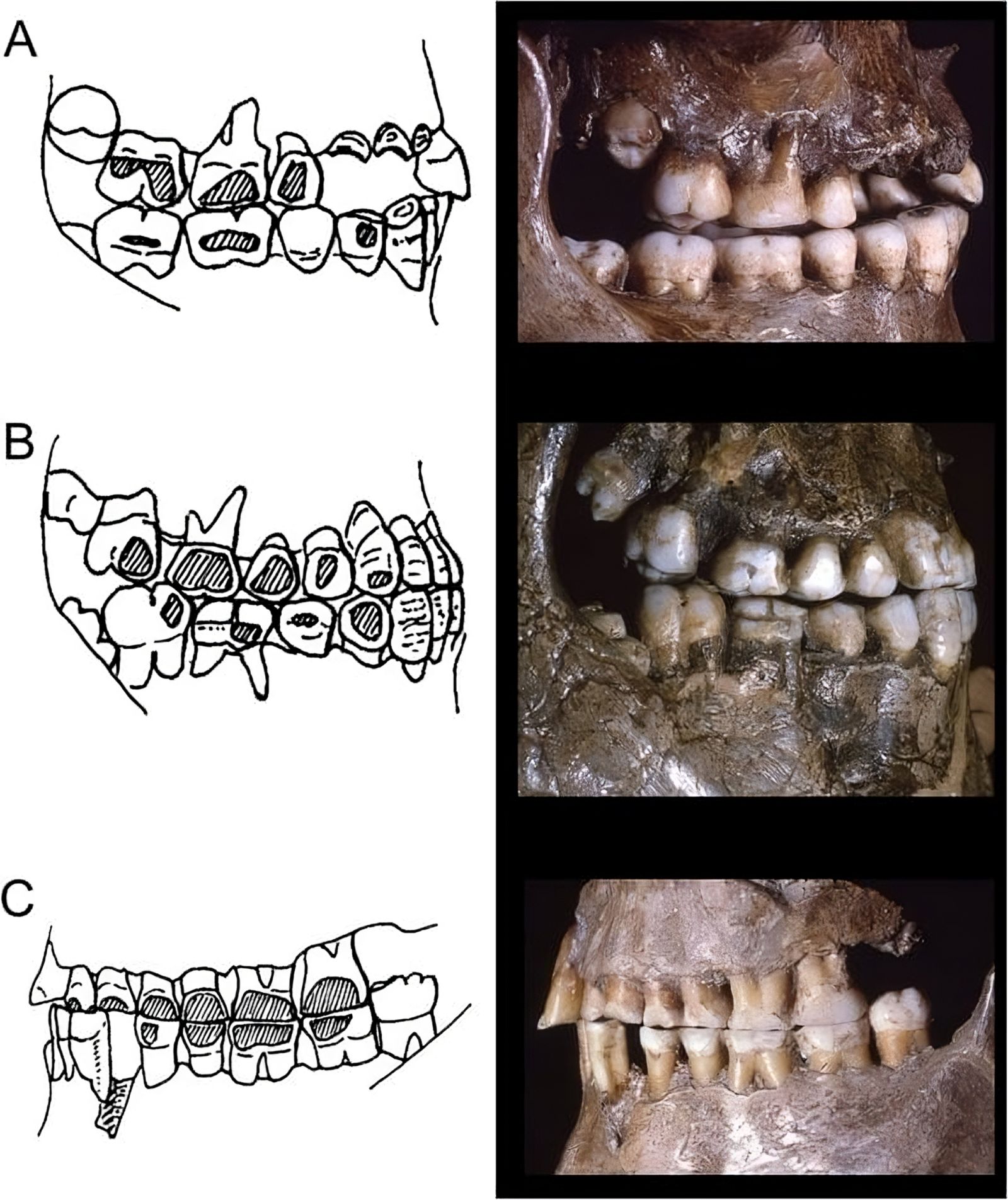30,000 years ago, these Europeans wore cheek piercings 🔍
Published by Cédric,
Article author: Cédric DEPOND
Source: Journal of Paleolithic Archaeology
Other Languages: FR, DE, ES, PT
Article author: Cédric DEPOND
Source: Journal of Paleolithic Archaeology
Other Languages: FR, DE, ES, PT
Follow us on Google News (click on ☆)
The wear patterns on the teeth of Pavlovian skeletons, a culture of hunter-gatherers, have puzzled scientists for decades. A recent study proposes a novel explanation: these marks would be due to facial piercings, called labrets, worn from childhood.

Excerpt from the study. Grooves are clearly visible on some teeth.
The mystery of ancient teeth
The teeth of the Pavlovians, dating from 25,000 to 29,000 years ago, show unusual wear patterns. These flat marks, located on the canines and molars, do not correspond to classic models of dental wear.
Scientists have long sought to explain these anomalies. Theories suggested dietary habits or tool use, but none proved conclusive. The hypothesis of facial piercings offers a new perspective.
Labrets, a bold explanation
John Willman, an anthropologist at the University of Coimbra, suggests that labrets, worn in the cheek or lip, caused this wear. The repeated friction between the piercing and the teeth would have left distinctive marks.
The study of skeletons shows that these piercings were worn from childhood. Baby teeth show signs of wear, while those of adults reveal more pronounced marks, indicating prolonged use.
A social and identity practice
Labrets would have served as markers of group belonging or symbols of rites of passage. Their use from childhood suggests early integration into the community.
In adults, the more extensive wear could reflect changes in social status. The piercings, made from perishable materials like wood or leather, have not survived over time, but their impact on the teeth remains visible.
A fresh look at ancient cultures
This discovery highlights the complexity of the Pavlovians' social practices. Piercings, far from being mere decoration, played a key role in their collective identity.
The absence of labret artifacts in excavations reminds us that many everyday objects have disappeared. This study invites us to reconsider the traces left by ancient cultures, beyond material remains.